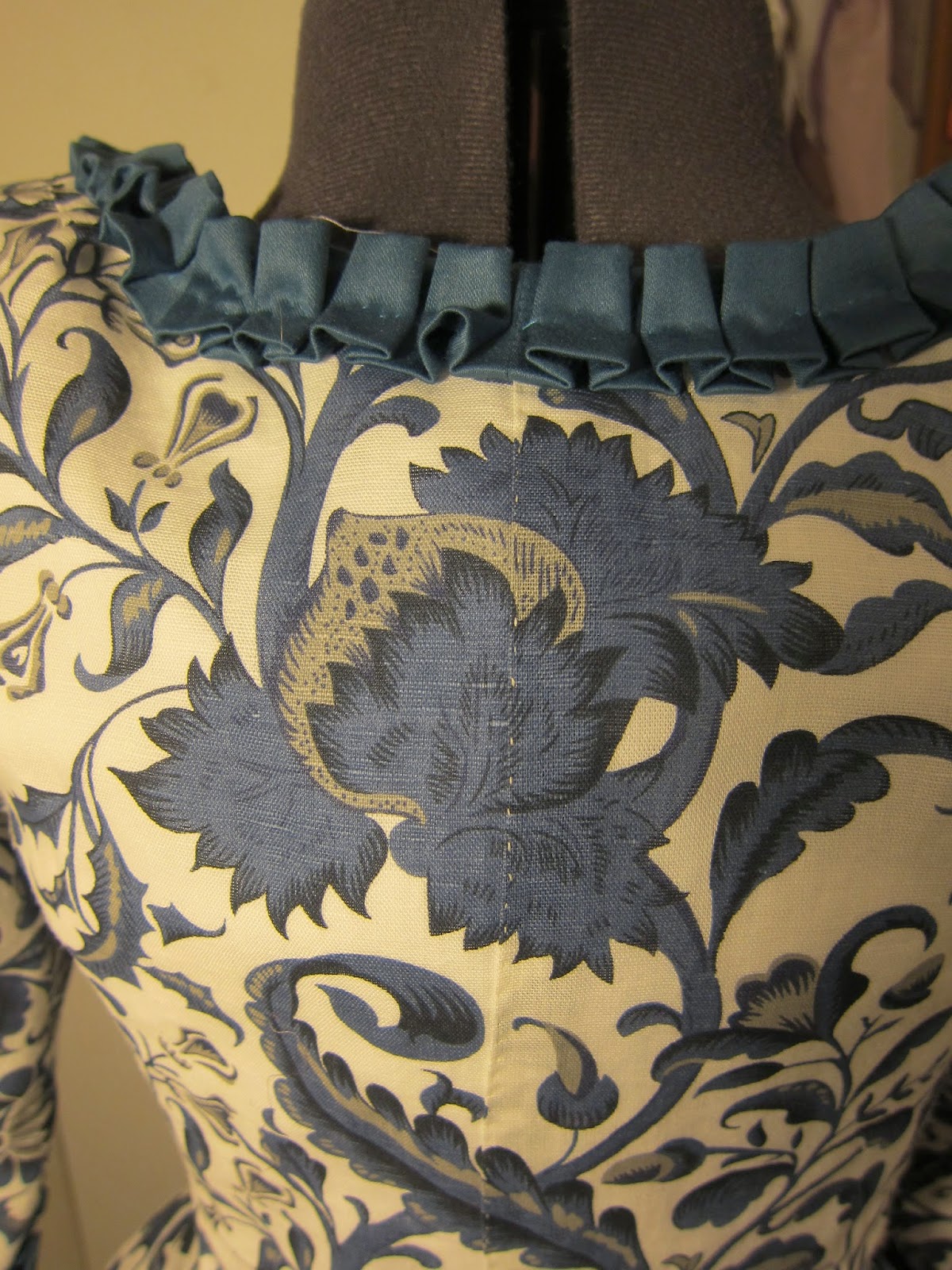Thanks to Olof for the nice pictures, taken in Gamla Linköping.
The back turned out a bit odd. I might have to sew down the burnouse pleats a bit to make it look better, now they seem to just stack up in a single heap.
We also took some photos of the Talma Wrap I made a few years ago. It was very nice and warm in the cold weather! It has a fitted back and a loose front. When I made it I did not think I would have much use for it, but with the unreliable summers here (and this winter photo session...) it has been very useful.
So, for the HSM:
Challenge #2: Blue
What the item is: 1886 Asymetrical overskirt
Fabric: A striped wool with nice drape, probably wool-polyester mix.
Pattern: None, draped with inspiration from lots of fashion plates.
Year: 1886
How historically accurate is it? Overall look is reasonably OK, even if it did not turn out quite as I wanted. Minus for syntetic in fabric. I am not sure about wearing an overskirt that is not matched to bodice at all. Maybe 75%?
Hours to complete: Lots and lots of time to try to decide how I wanted it to look, and then figuring out how to drape it. About two hour actually sewing (mostly for hand hemming all edges).
First worn: For photo session today.
Total cost: Fabric from stash. Maybe about 200 SEK, that is about 20 Euro?
Year: 1886
How historically accurate is it? Overall look is reasonably OK, even if it did not turn out quite as I wanted. Minus for syntetic in fabric. I am not sure about wearing an overskirt that is not matched to bodice at all. Maybe 75%?
Hours to complete: Lots and lots of time to try to decide how I wanted it to look, and then figuring out how to drape it. About two hour actually sewing (mostly for hand hemming all edges).
First worn: For photo session today.
Total cost: Fabric from stash. Maybe about 200 SEK, that is about 20 Euro?
















